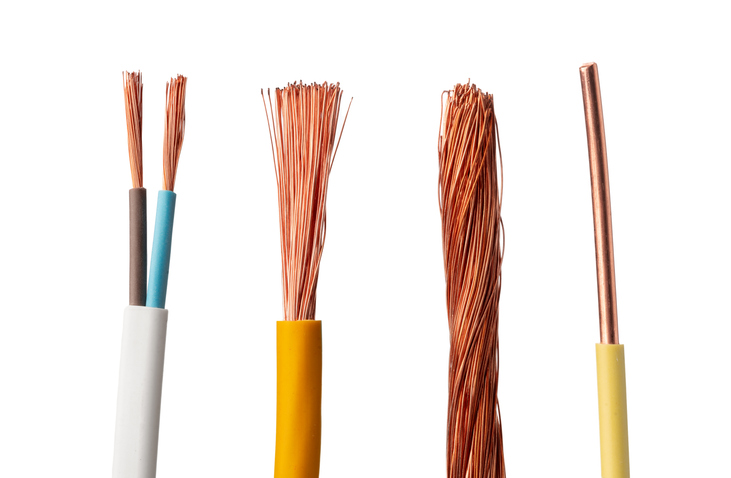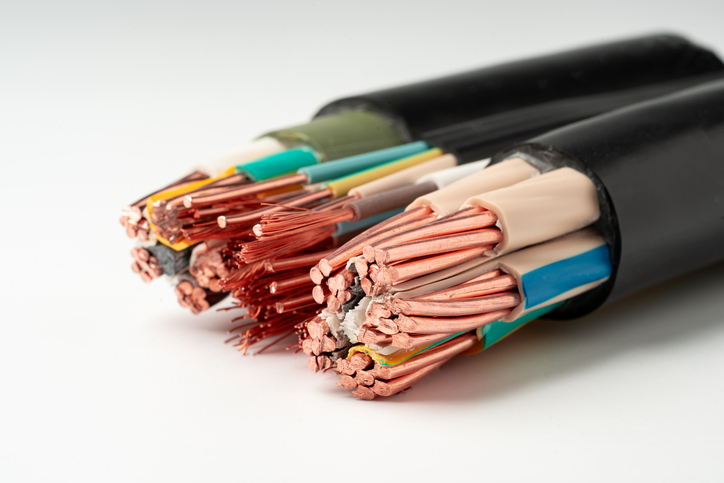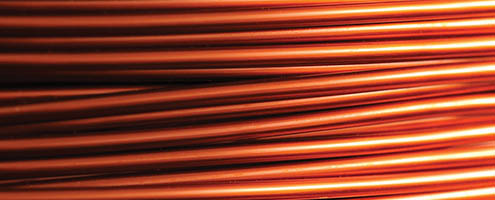Riser vs Plenum Cable
Choosing cables and setting up networking infrastructure in a commercial building is no small task. Many requirements, including fire safety guidelines and codes, dictate which types of cables to use and where.
Many situations require self-extinguishing and non-flammable cables, such as riser and plenum cables. Unlike their standard PVC-jacketed counterparts, riser and plenum cables are fire-resistant and, in some cases, self-extinguishing. These features help keep the building safe and up to code.
If you're looking for a riser or plenum cable or are weighing the question of riser vs. plenum cable for your application, we're here to help. In this guide, we'll explore riser and plenum-rated cables, what they do, and where they're the best choice.
Riser and Plenum Spaces
Inside the walls and floors of commercial buildings is a maze of ductwork. The ductwork plays host to many different utilities within a building—electrical wiring, plumbing, communication cables, and more.
Riser spaces are the vertical spaces that allow for distribution of utilities in a building. The riser-rated cables have fire-resistant properties that ensure the flames will not spread between floors via cables in the event of a fire. These are an essential choice for fire codes in multi-story buildings.
Plenum spaces are also very common. These spaces are above drop ceilings, below raised floors, and within air return ducts. Plenum spaces are often associated with HVAC and air circulation.
We rely on plenum cables for plenum spaces. These specialized cables are designed to emit less smoke and toxic fumes during a fire. In a commercial building, air quality and fire prevention are crucial.
Why won’t typical, unrated polyvinyl chloride (PVC)-type cable jacket material work in riser and plenum spaces? The jackets are flammable. In the event of a fire, the cable acts as a conduit, thanks to the flow of air within the ductwork. Even a small fire can quickly grow out of control, so using the right cable for any commercial building application is critical.
What is Riser Cable?
Riser cable is electrical or communications cable used in vertical riser spaces (between building floors). Riser cables are flame-retardant, preventing the spread of fire through floors by vertical channels and pathways.
Riser cables are a must-have for fire safety standards in multi-story buildings. They keep the building safe by minimizing and helping contain any potential fire.
Common Acronyms for Riser Cable
Many cables have several names, and riser cable is no exception. You may see this type of cable called CMR, communications multipurpose cable, riser, or riser cable. No matter what name, it refers to vertical cabling that offers fire resistance and meets stringent safety standards.
What is Riser Cable and When to Use It?
Riser cable is used in vertical applications—connecting different building floors, like the basement, to the levels above. The cable often connects floors in multi-story building structures.
Both riser and plenum cables use pure copper conductors and have the same electrical features. The critical distinction between the two cable types is the fire rating of the outer cable jacket. Riser cables are flame-retardant but don't hold the same high fireproof rating as plenum cables (and shouldn't be used in plenum spaces).
Why not use plenum cables throughout a building? The question is often one of cost. Plenum cables can be substantially more costly, making riser cables a less expensive but still effective option for proper use.
Riser cables meet most safety and fire standards for commercial and multi-story residential installations and buildings. There are many ways that they’re used throughout the building in different environments:
- Telecom and Data Networks: Riser cables may connect the floors of a building using data networks and telecommunications infrastructure. Technicians run the cables through vertical riser spaces, offering reliable communication and internet connectivity to multiple floors.
- Electrical Wiring: Riser cables are also used for electrical wiring that runs vertically between floors. In these power distribution systems, riser cables provide fire resistance to minimize the spread of electrical fires.
- Security Systems: Riser cable is the go-to choice for security and surveillance systems that connect sensors, cameras, alarms, and other security tools between different building floors. Many commercial buildings require a comprehensive security system that operates throughout the entire structure.
- Fire Alarm Systems: Riser cables connect sensors, alarms, control panels, and other aspects of fire alarm systems between different floors. Using these cables ensures that signals will travel vertically throughout the entire building in case of an emergency.
- HVAC Systems: In commercial buildings with large, often complex HVAC systems, riser cables keep sensors and control units connected to regulate heat, ventilation, and airflow. Environmental conditions vary between floors, but riser cable keeps them connected and communicative.
- Audio and Visual Systems: Building intercoms and PA systems often require riser cables to connect audio and visual systems throughout a building. Riser cable plays an especially crucial role in buildings like hospitals and schools, where communication and timely information dissemination are essential.
What is Plenum Cable?
Plenum cable, like riser cable, is also used in commercial buildings' electrical and communications infrastructure. Plenum cable is also used in spaces used for HVAC (heating, ventilation, and air conditioning) systems. These oxygen-filled areas are typically above drop ceilings and below raised floor areas.
Because of the oxygen-rich space, extra fire resistance is crucial for these cables. Plenum cables are made using low-smoke materials and flame-retardant jackets to pose less risk to occupants in the event of a fire.
Common Acronyms for Plenum Cable
Similar to riser cable, plenum cable has several names. Cables are sometimes called CMP, communications multipurpose cable, and plenum. No matter the name these cables are crucial for fire safety and code compliance of a building’s infrastructure.
What is Plenum Cable and When to Use It?
As you can probably deduce, plenum cables are needed whenever wiring and cables are installed through HVAC ductwork or any spot that plays a role in ventilation and airflow balance.
There are also other uses and applications that require plenum cable as well. Often, if a space requires additional fire safety and protection, it will be required by the building code.
You can learn a lot about plenum-rated cable by reading the information printed on the cable's outer jacket. The jacket will contain information about the jacket rating and the verification. Two labs conduct most of the plenum cable testing: Underwriters' Laboratories (UL) and the Electrical Testing Laboratories (ETL).
To verify the plenum cable, check the ETL and UL catalogs where they will be listed. When a cable is properly vetted, it is categorized as "UL listed" or "ETL listed." That means the cable has passed the required safety tests and meets the high safety standards.
Here are some common use cases for plenum cables:
- Telecommunications and Data Networks: Like riser cable, plenum cable is used in telecom and data networking applications, specifically when the cables run through plenum spaces, like drop ceilings. These cables connect spaces throughout the building with safe, fire-resistant properties.
- HVAC Systems: Plenum cables connect sensors, controllers, actuators, and other components that monitor heating, air conditioning, and building ventilation. Plenum cable is the go-to choice for these air-handling spaces because of its resistance to fire and lack of toxic fume emission.
- Fire Alarm Systems: Like riser cables, plenum cables are also found throughout fire alarm systems. These cables connect alarms, control panels, smoke detectors, and other fire safety equipment within the ductwork and plenum spaces. These cables help ensure that the system will continue to operate properly, even during a fire.
- Security Systems: You will often find plenum cables in security systems that connect motion detectors, access control systems, surveillance cameras, and other sensitive equipment. The cables are placed throughout plenum spaces, ensuring comprehensive building coverage and secure communication.
- Audio and Visual Systems: Schools, hospitals, and other large buildings may select plenum cables to connect AV equipment, including intercoms and public address systems. If cables need to run through plenum spaces, then plenum-rated cables will ensure fire safety compliance.
- Climate Control and Automation Systems: Smart buildings rely on plenum cables to connect the sensors and controls for lighting, climate control, and automated functions within their building systems. The systems often require cabling throughout plenum spaces, where plenum cable is a must.
- Electrical Wiring: Plenum cable is less commonly used in standard electrical applications, but it is a solution for electrical wiring in plenum spaces requiring high fire safety standards. Plenum cables distribute electrical power in oxygen-rich air-handling systems.
The Difference Between Riser and Plenum Cables
By now, many of the main differences between riser and plenum cables should be evident—it depends on the fire-resistance requirements of the application. There are some key areas where these two fire-resistant cables differ.
Fire Safety Standards
Riser Cables (CMR): Riser cables are specially designed to be used in vertical riser spaces between building floors. They are made with flame-retardant materials to help thwart the spread of fire between floors. Riser cables meet many specific safety standards but are less stringent than the plenum cable.
Plenum Cables (CMP): Plenum cabling is made for use in plenum spaces—the places where air circulates and fire spreads quickly—ventilation, duct work, below raised flooring, and above drop ceilings. These flame-retardant cables have low-smoke, fire-resistant plenum jackets that stand up to heat and fire while minimizing toxic gases and smoke.
Installation Locations
Riser Cables: Riser cable is used in vertical space between floors. It connects the different levels of a building and is often found within elevator shafts, stairwells, and inside vertical conduits.
Plenum Cables: Plenum cables are the go-to choice for horizontal plenum spaces, often used in the HVAC system and air circulation. These cables are suited for use in HVAC air returns and ventilation pathways. You’ll find plenum cable above drop ceilings and below raised floors.
Material Composition
Riser Cables: Riser cable is constructed with flame-retardant jacket materials. These materials are safe for many building riser applications and are often more affordable than the material costs of plenum cables.
Plenum Cables: Plenum cables are constructed with highly fire-resistant materials. In the event of a fire, the jackets emit low smoke and reduce the chance of toxic fumes. They don't cause flame propagation or increase the spread of smoke. Plenum cables are more expensive because of the specialized materials and strict manufacturing standards.
Regulatory Requirements
Riser Cables: Riser cables meet and comply with the NEC (National Electrical Code) standards and other building codes for vertical installations. These are suitable for commercial spaces—places where fire containment is very important but not as critical as air-handling spaces.
Plenum Cables: Plenum cables must meet the stringent NEC standards for installation in plenum spaces, which pose a higher risk of fire spread due to the oxygen-rich environment. They are also required in ventilation spaces where air movement would quickly distribute smoke and toxic fumes through the building.
Cost Considerations
Riser Cables: Riser cables are the more affordable choice in most cases. They have fewer material and safety requirements, making the materials less expensive.
Plenum Cables: Plenum cable is typically more costly due to the advanced materials and adherence to high-level safety standards. However, when plenum cable is required, it must be used to meet fire safety codes.
Get Riser and Plenum Cables at IEWC
Whether your job requires riser cables for vertical installations between floors or plenum cables for air ducts, drop ceilings, and horizontal installation in air-handling spaces, you’ll find the cable type you need at IEWC.
We can help you navigate the costs and find the right cable to meet smoke and emission requirements for commercial use. If you require the highest level of fire safety, we have the right products to meet your construction needs.
Reach out if you need assistance making an informed choice about cable types. We'll help you find an option that ensures safety, code compliance, and cost-effectiveness. Request a quote to learn more today.
Related Resources

What is a Wire?
Wire refers to a single, usually cylindrical, strand or rod of metal which is used to carry electricity and telecommunications signals. Learn More
What is a Cable?
Cable, or cabling, consists of the twisting together of two or more insulated conductors.Learn More
Selecting a Conductor
Even in the design of a simple single insulated wire many factors must be considered, including physical properties of the conductorLearn More


